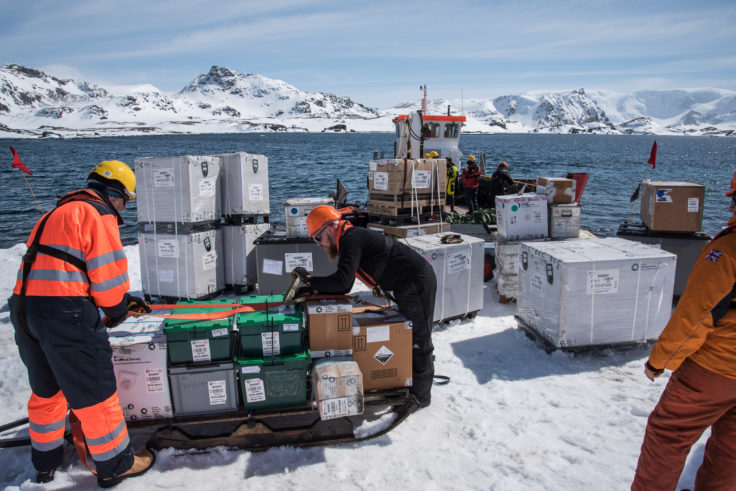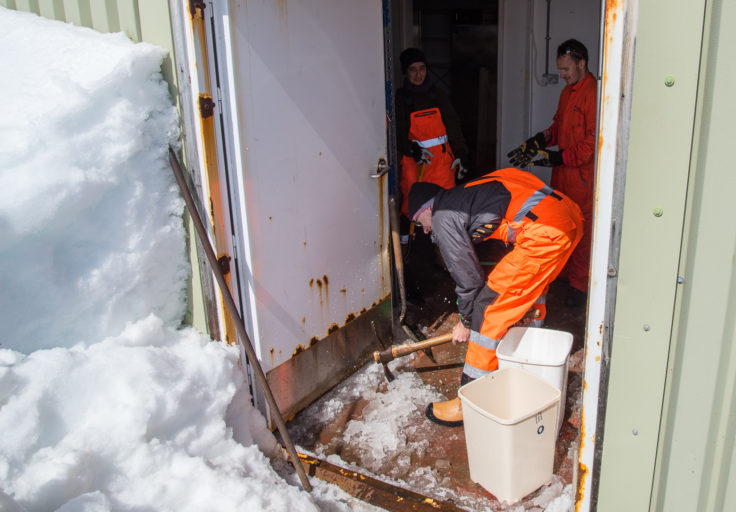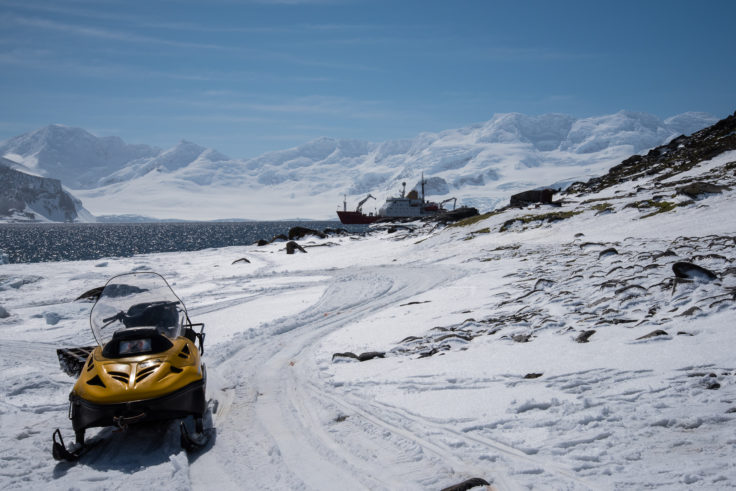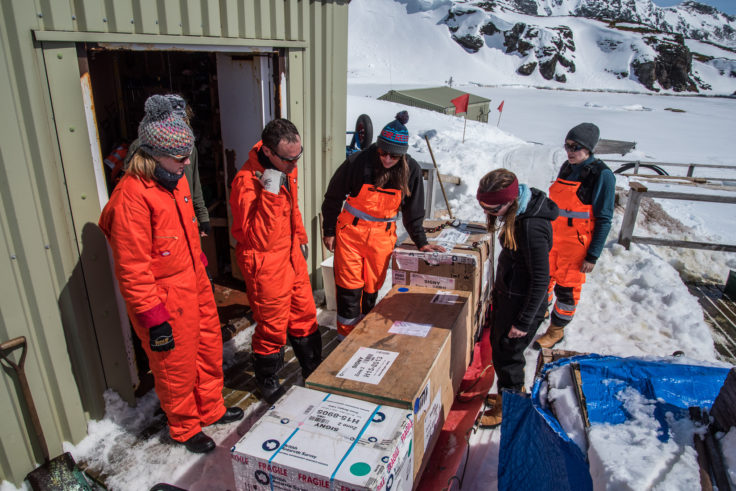Opening up Signy Research Station after a long winter!
25 February, 2016 Signy
Since 1996 Signy has been a summer-only station, operating for five to six months each year in support of the biological sciences. When we arrived on the RRS James Clark (JCR) Ross in mid-November, we had a big task before us; dig the station out from its winter slumber and get it up and running!

Signy Research Station has a long and interesting history starting back to the late 1940s with the Falkland Islands Dependencies Survey. In the early 1900s, in the same protected harbour provided by Factory Cove, Signy was the centre of whaling activities in the South Orkney Islands. The cove and nearby place names like Mooring Point, Waterpipe Beach and Knife Point are all testament to those times, as are the physical reminders dotted around the area.
Remnants of an old iron “water boat” slowly rust away just a couple of hundred meters down the shore from the station. Out our front door, in the inter-tidal zone, like our very own lawn ornament, is a big iron boiler once used by the whalers. Old rusted anchor chains and whale bones can be seen on many of the beaches. A short walk away, at Cemetery Flats, the graves of five young whalers are often surrounded by numerous elephant seals.
Early on our second day, and with an army of help from the staff aboard the JCR, we set to digging out the doors and walkways of the station from winter’s drifts. Many of us were new to the operation here but that didn’t matter too much. We had veteran Signy folk to guide us at every turn. Station Leader Matt Jobson was starting his 10th season. Mike Dunn, Higher Predator Ecologist, and Stacey Adlard, Zoological Field Assistant, have 15 years of Signy knowledge and expertise between them.

In spite of all the snow spring had already sprung. Melt water was running across the still frozen ground, under the drifts and everywhere it could, including into the “Top Store”. The Top Store is the main building for “everything else” at Signy: frozen and dry food storage, scientific supplies, recycling, field equipment, building materials, chippy’s tools and so much more. A six cm layer of ice covered the floor in the main area and in the food storage room that ice was topped by five cm of water. We had to get all that removed and cleaned up before we could start moving the cargo in from the ship. A bucket brigade and chopping crew managed it in good time.
Moving the cargo was not straightforward. With the jetty inaccessible because of the fast ice, improvisation was required. Thankfully, the fast ice ended less than a couple of hundred metres from the jetty. Factory Cove’s forgiving eastern shoreline allowed for some careful ski-doo travel between the base and a spot on an elevated ice foot where we could land the ship’s cargo tender. The backbreaking work of hauling the cargo exclusively by hand could be lessened by use of the almighty snowmobiles on station. The ample snow cover allowed us to set ski-doo routes around the buildings to drop off sledge loads of supplies.

Nonetheless, the job would still require a lot of repetitive heavy lifting to transfer everything between ship and station. If there are well-worn traditions in BAS demanded by the environment we work in, moving tonnes of cargo by hand has to be top of the list. Everything gets handled multiple times just in its short journey from the JCR to the station. In a trip between the ship’s hold and a shelf on base, each box is handled at least a dozen different times and the conveyances are many. The ship’s cranes, boats, sledges, ski-doos and maybe even a pallet truck all make that journey more efficient than it might otherwise be.

All this took a few days from start to finish. The weather was good for most of it but we got delayed when the ice blew in and our heretofore good landing spot on the fast ice was no longer accessible. Suddenly, with only a minimum of cargo ashore, we were at risk of starting the season with minimal satellite communications and last year’s emergency food stocks. But things change quickly down here. With patience, the ice blew out, the tender got back in and a big and varied team got the job done.